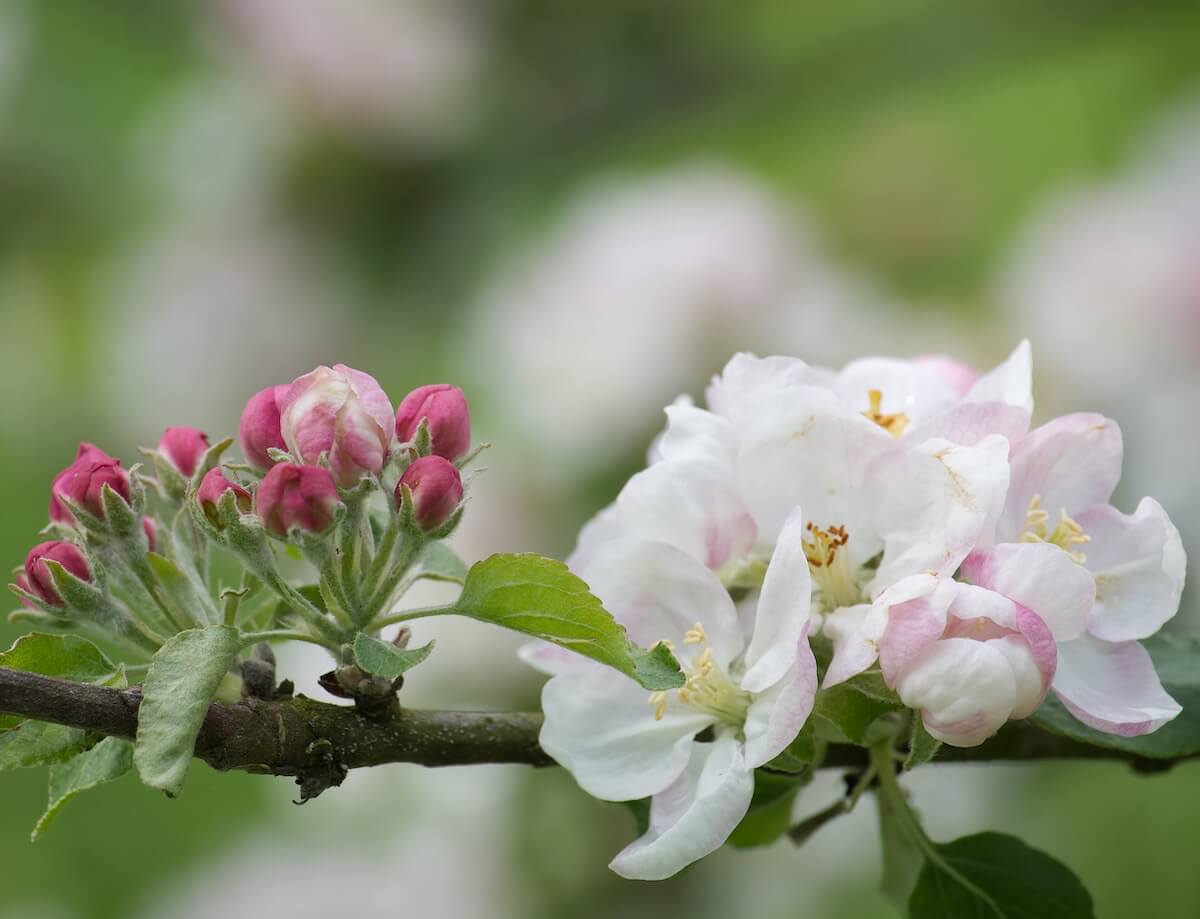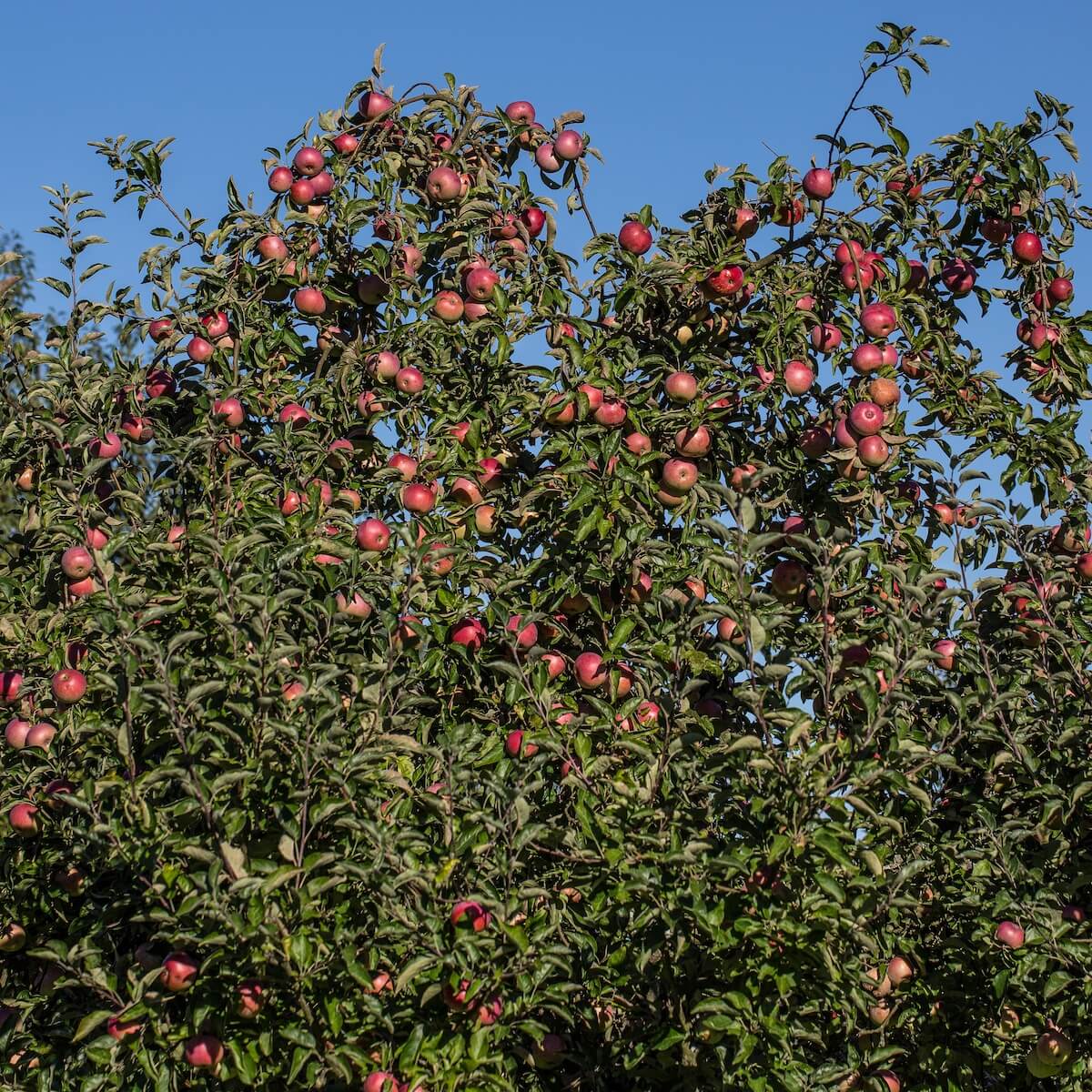Apple Pollination Groups in the UK: A Guide to Successful Fruit Pollination
Growing apples successfully starts with understanding their pollination. Without proper tree pollination, your apple tree may struggle to produce fruit. That’s why learning about apple pollination groups is key. In this guide, we’ll explore how pollination groups work, how to choose a suitable pollination partner, and how to achieve good pollination for the best harvest. Whether you’re a beginner or a seasoned gardener, this article will help ensure successful pollination in your orchard.
How Does Apple Tree Pollination Work?
Apple trees rely on pollinating insects, like bees, to transfer pollen from one tree to another. This process, known as fruit tree pollination, allows trees to set fruit.
Most apple trees need to be pollinated by another tree of a different variety that flowers at the same time. However, some varieties are self-fertile, meaning they can produce fruit without another tree nearby. Even self-fertile varieties benefit from cross-pollination, leading to better fruit size and quantity.

What Are Apple Pollination Groups?
Apple trees are classified into apple pollination groups based on their flowering time. These groups come in sequential order, ensuring that trees flower at the same time for successful pollination. Understanding apple pollination groups will help ensure successful crops each season.
Pollination Grouping System
Group 1: Early flowering
Group 2: Mid-early flowering
Group 3: Mid-season flowering
Group 4: Late flowering
Group 5+: Very late flowering
A tree can only be pollinated by another tree in the same or adjacent group. For example, a group 3 tree can be pollinated by another tree from group 2 or group 4.

What Are Triploid Apple Trees?
Some varieties are triploid, meaning they have sterile pollen and cannot pollinate other trees. These trees require two other trees from compatible pollination groups to ensure a successful fruit set.
Common triploid varieties include:
- Bramley’s Seedling
- Blenheim Orange
- Orleans Reinette
Plant a triploid tree alongside two other fruit trees from compatible flowering groups to successfully produce fruit.
How to Choose a Pollination Partner
To ensure successful pollination, choose a suitable pollination partner from the same or adjacent pollination group. Use an apple pollination groups chart to match your variety with the right partner. If space is limited, consider planting a self-fertile variety or using crab apple trees as universal pollinators.
The Role of Crab Apple Trees in Pollination
Crab apple trees are excellent pollinators as they produce an abundance of pollen and flowers at the same time as many apple trees. They are particularly useful to ensure good pollination but only have space for one tree.
Can You Pollinate Apple Trees with Other Fruit Trees?
Many people wonder if apple and pear trees can cross-pollinate. The answer is no—apple trees can pollinate only other apple trees, while pear trees require a separate pollination partner.
What If You Live in a Built-Up Area?
If you live in a built-up area, you might worry about poor fruit tree pollination. The good news is that pollinating bees can travel several miles, increasing your chances of successful pollination. You can also plant multiple trees in neighbouring groups to improve fruit pollination.
How to Improve Pollination in Your Garden
To encourage successful pollination, follow these steps:
Plant compatible varieties from adjacent groups.
Encourage pollinating insects by growing flowers nearby.
Include a crab apple tree for extra pollen.
Check their pollination groups before purchasing new trees.
Avoid triploid varieties unless you have multiple trees.
Key Things to Remember
Apple trees need cross-pollination unless they are self-fertile.
Use an apple pollination groups chart to select a suitable pollination partner.
Triploid varieties need two other trees for successful pollination.
Crab apple trees make excellent pollinators.
Pollination may be improved by planting trees from neighbouring groups.
Pollinating bees can travel, so urban orchards can still be successful.
With the right approach to apple tree pollination, you’ll enjoy a fruitful harvest year after year!

Frequently Asked Questions
Q: What are apple tree pollination groups?
A: Apple Pollination Groups categorise apple varieties based on their cross-pollination ability. Planting trees that can effectively share pollen is essential for good fruit production.
Q: Do all apple trees need another tree to pollinate?
A: Not all apple trees need another tree to pollinate. Some varieties are self-fertile, meaning they can produce fruit without the need for pollination by another plant. However, for better fruit pollination, most apple trees benefit from having another tree nearby.
Q: What is the importance of flowering time in apple trees?
A: Flowering time is crucial because, for pollination to occur, the apple blossoms of different trees need to be open at the same time. You might have poor pollination and fewer apples if trees have mismatched flowering periods.
Q: Can different apple varieties pollinate each other?
A: Different apple varieties can pollinate each other, but they must belong to compatible apple tree pollination groups. For example, a tree from group B can pollinate a tree from group C, but not all combinations work.
Q: What is a pollination groups chart?
A: A pollination groups chart is a helpful guide that shows which apple tree varieties can cross-pollinate. It helps you decide which trees to plant together for the best results.
Q: What happens if I plant only self-fertile apple trees?
A: If you only plant self-fertile apple trees, you might still get apples, but your harvest will be smaller. Another nearby apple tree can improve fruit yield and quality, even among self-fertile varieties.
Q: Are there any sterile apple tree varieties?
A: Some apple tree varieties produce sterile pollen and cannot pollinate other trees. These trees should be planted alongside varieties that can support fruit pollination.
Q: How do I know which apple trees to plant together?
A: To determine which apple trees to plant together, check their pollination group compatibility using a pollination groups chart. Could you make sure you pair varieties that bloom at the same time and belong to adjacent groups?
Q: Can fruit trees other than apple trees help with pollination?
A: Generally, apple trees need pollen from a compatible variety of the same kind for successful pollination. Other fruit trees, such as plums or cherries, won’t be effective, so be sure to choose a suitable partner from within the same group.
Q: Where can I purchase apple trees that are suitable for pollination?
A: Trees suitable for pollination are widely available at garden centres and through online retailers. When purchasing, check their pollination group to ensure they will work well with any existing trees in your garden.
